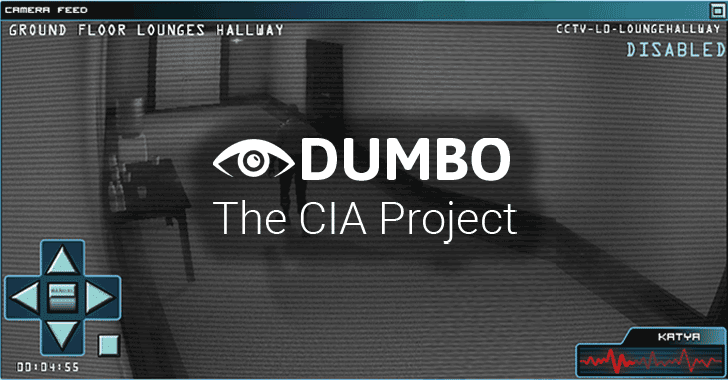In last 20 years, we have seen hundreds of caper/heist movies where spies or bank robbers hijack surveillance cameras of secure premises to either stop recording or set up an endless loop for covert operations without leaving any evidence.
Whenever I see such scenes in a movie, I wonder and ask myself: Does this happen in real-life?
Yes, it does, trust me—at least CIA agents are doing this.
WikiLeaks has just unveiled another classified CIA project, dubbed ‘Dumbo,’ which details how CIA agents hijack and manipulate webcams and microphones in Hollywood style “to gain and exploit physical access to target computers in CIA field operations.”
The Dumbo CIA project involves a USB thumb drive equipped with a Windows hacking tool that can identify installed webcams and microphones, either connected locally, wired or wirelessly via Bluetooth or Wi-Fi.
Once identified, the Dumbo program allows the CIA agents to:
- Mute all microphones
- Disables all network adapters
- Suspends any processes using a camera recording device
- Selectively corrupted or delete recordings
However, there are two dependencies for a successful operation:
- Dumbo program requires SYSTEM level privilege to run.
- The USB drive must remain plugged into the system throughout the operation to maintain control over connected surveillance devices.
This project is being used by the CIA’s Physical Access Group (PAG)—a special branch within the Center for Cyber Intelligence (CCI) which is tasked to gain and exploit physical access to target computers in CIA field operations.
Previous Vault 7 CIA Leaks
Last week, WikiLeaks published another CIA project, dubbed ‘Imperial,’ which revealed details of at least 3 CIA-developed hacking tools and implants designed to target computers running Apple Mac OS X and different flavours of Linux operating systems.
Since March, WikiLeaks has published 19 batches of “Vault 7” series, which includes the latest and last week leaks, along with the following batches:
- UCL/Raytheon — An alleged CIA contractor, which analysed in-the-wild advanced malware and hacking tools and submitted at least 5 reports to the agency for help it develop its own malware.
- Highrise — An alleged CIA project that allowed the spying agency to stealthy collect and forward stolen data from compromised smartphones to its server via SMS messages.
- BothanSpy and Gyrfalcon — 2 alleged CIA implants that allowed the agency to intercept and exfiltrate SSH credentials from targeted Windows and Linux computers using different attack vectors.
- OutlawCountry – An alleged CIA project that allowed the agency to hack and remotely spy on computers running Linux operating systems.
- ELSA – Alleged CIA malware that tracks geo-location of targeted laptops and computers running the Microsoft Windows OS.
- Brutal Kangaroo – A tool suite for Microsoft Windows OS used by the CIA agents to target closed networks or air-gap computers within an organisation or enterprise without requiring any direct access.
- Cherry Blossom – A framework employed by the agency to monitor the Internet activity of the targeted systems by exploiting flaws in Wi-Fi devices.
- Pandemic – A CIA’s project that allowed the spying agency to turn Windows file servers into covert attack machines that can silently infect other PCs of interest inside the same network.
- Athena – A spyware framework that the agency designed to take full control over the infected Windows systems remotely and works against every version of Windows OS–from Windows XP to Windows 10.
- AfterMidnight and Assassin – 2 alleged CIA malware frameworks for the Microsoft Windows platform that’s meant to monitor and report back actions on the infected remote host PC and execute malicious actions.
- Archimedes – Man-in-the-middle (MitM) attack tool allegedly developed by the agency to target computers inside a Local Area Network (LAN).
- Scribbles – Software allegedly designed to embed ‘web beacons’ into confidential documents, allowing the CIA agents to track insiders and whistleblowers.
- Grasshopper – A framework which allowed the spying agency to easily create custom malware for breaking into Microsoft’s Windows OS and bypassing antivirus protection.
- Marble – Source code of a secret anti-forensic framework used by the agency to hide the actual source of its malware.
- Dark Matter – Hacking exploits the spying agency designed to target iPhones and Macs.
- Weeping Angel – Spying tool used by the CIA agents to infiltrate smart TV’s, transforming them into covert microphones.
- Year Zero – CIA hacking exploits for popular hardware and software.














